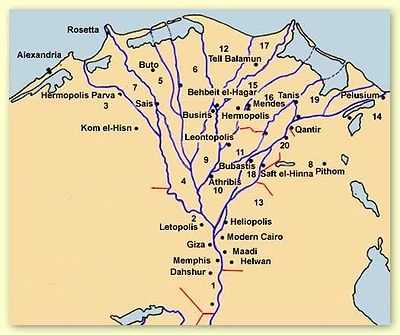Busiris (Lower Egypt)

Busiris (Greek: Βούσιρις, Herod. i. 59, 61,165; Strabo xvii. p. 802; Plut. Is. et Osir. 30; Ptol. iv. 5. § 51; Plin. v. 9. s. 11: Hierocl. p. 725; Steph. B. s. v.) was an ancient city of Lower Egypt, located at the modern Abu Sir Bana. In antiquity, it was the chief town of the nome Ati in Egypt, and stood west of Sais, near the Phatnitic mouth on the western bank of the Damietta Branch of the Nile.
The town and nome of Busiris were allotted to the Hermotybian division of the Egyptian militia. It was regarded as one of the birthplaces of Osiris, as perhaps, etymologically, the name itself implies. The festival of Isis at Busiris came next in splendor and importance to that of Artemis at Bubastis in the Egyptian calendar. Considerable ruins are still extant.
The temple of Isis, indeed, with the hamlet which sprang up around it, stood probably at a short distance without the walls of Busiris itself, for Pliny (v. 10. s. 11) mentions Isidis oppidum in the neighbourhood of the town. The ruins of the temple are still visible, a little to the north of Abusir, at the hamlet of Bahheyt. (Pococke, Travels, vol. i. p. 34; Minutoli, p. 304.)
References
 This article incorporates text from a publication now in the public domain: Smith, William, ed. (1854–57). "article name needed". Dictionary of Greek and Roman Geography. London: John Murray.
This article incorporates text from a publication now in the public domain: Smith, William, ed. (1854–57). "article name needed". Dictionary of Greek and Roman Geography. London: John Murray.
Coordinates: 30°54′40″N 31°14′40″E / 30.91111°N 31.24444°E